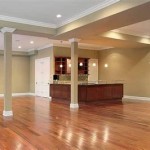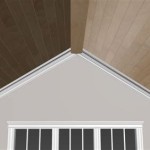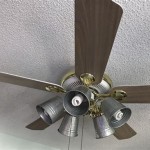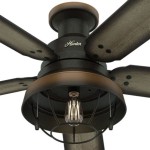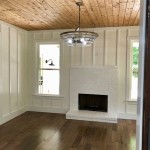Ceiling Lighting Design: Essential Aspects for a Perfect Illumination
Ceiling lighting plays a crucial role in setting the ambiance and functionality of any room. With the right design and placement, you can create a space that is both aesthetically pleasing and well-lit. Here are some essential aspects to consider when designing ceiling lighting.
1. Determine the Purpose of the Room
The primary function of the room will determine the type and amount of lighting required. For example, kitchens need bright, task lighting for food preparation, while bedrooms require softer, ambient lighting for relaxation.
2. Consider the Room's Size and Shape
The size and shape of the room will impact the placement and number of light fixtures. Larger rooms will typically require more light sources than smaller ones, while irregularly shaped rooms may need specialized lighting techniques to ensure even illumination.
3. Choose the Right Fixture Type
There are a wide variety of ceiling light fixtures available, including chandeliers, pendants, recessed lighting, and track lighting. Consider the overall style of the room and the desired lighting effect when selecting the fixture type.
4. Determine the Light Source
The light source refers to the type of bulb used in the fixture. Incandescent, fluorescent, LED, and halogen bulbs are the most common options, each with its own unique characteristics and energy efficiency.
5. Plan the Lighting Layout
The layout of the lighting fixtures is crucial to ensure proper illumination. Consider the placement of furniture, windows, and other architectural features to determine the best arrangement for even light distribution.
6. Layer Lighting
Layering lighting refers to using a combination of different light fixtures to create a more dynamic and visually interesting effect. For example, you could use recessed lighting for general illumination, a pendant light for task lighting, and a chandelier for ambient lighting.
7. Control the Ambiance
Dimmers and switches allow you to control the light output and create different moods in the room. Adjustable lighting is particularly useful in spaces like living rooms and bedrooms, where you may want to adjust the brightness depending on the activity or time of day.
8. Consider Energy Efficiency
LED lighting is the most energy-efficient option available, offering significant savings on electricity costs over time. When selecting light fixtures, pay attention to the Energy Star rating to ensure optimal efficiency.
9. Maintain the Lighting System
Regular maintenance is essential to keep ceiling lighting in good working order. Regularly clean fixtures, replace bulbs as needed, and ensure proper electrical connections to prevent malfunctions and safety hazards.
10. Seek Professional Advice
If you are unsure about any aspect of ceiling lighting design, it is recommended to consult with a professional electrician or lighting designer. They can provide expert guidance on fixture selection, placement, and wiring, ensuring optimal lighting for your space.

A Comprehensive Guide To The Best Ceiling Lights Designs For Your Home

35 Most Popular Modern Ceiling Light Ideas Engineering Discoveries Lights Living Room Luxury Design House

Top 3 Ideas To Light Up Your Ceiling Saint Gobain Gyproc

A Comprehensive Guide To The Best Ceiling Lights Designs For Your Home

Top 3 Ideas To Light Up Your Ceiling Saint Gobain Gyproc

9 Ceiling Light Designs For Home 2024

9 Types Of False Ceiling Light Designs To Glam Up Your Home

Ceiling Light Design Ideas For Your House

5 Ceiling Light Designs That Will Make You Talk Of The Town

20 Modern Ceiling Lights Designs Ideas Light Design False Living Room
Related Posts

